Arrested Development
by Michelle Cho
South Korea’s first female president is behind bars; Samsung’s chief might end up there too. For the directors of the country’s cult film scene, Seoul is a viper pit and gangsters are in charge
I.
Japan has its epics and domestic dramas, India its color-drenched musicals, China its wuxia blockbusters — but the country that has recently come to dominate Asian cinema is smaller than all of these. Just as it has with music, TV soaps, and video games, South Korea has lately romped into the forefront of the region’s movie industry, and this May, for the fourth year in a row, films from South Korea will outnumber selections from China, India, and Japan at the Cannes Film Festival. Just as noteworthy as their quantity, however, is the fact that the most successful Korean movies screened at the festival aren’t arthouse films. Since the 2000s, Korea’s leading directors have cast their lot with genre-bending, extreme cinemas — principally gangster-noir, revenge action, and horror — whose formal constraints offer a platform for sensational thrills. The shift has paid off, securing Korea’s place amongst the most critically acclaimed and commercially successful film industries in the world.
The characteristic use of genre clichés to express local concerns elevates these works beyond mere transnational commodities to representative works of contemporary film art. Take Park Hoon-jung’s neo-noir gangster film New World, which was released in 2013. It opens with a scene of a suspected informant being tortured, encased in cement, and dumped into the ocean off the port of Incheon to sleep with the fishes. The film’s protagonist stands on the pier, against the horizon, with the heavy machinery of the docks looming over him; the screen is saturated in blues, thanks to the careful lensing of the cinematographer Chung Chung-hoon (who also shot Park Chan-wook’s Oldboy [2003], a Cannes prizewinner and one of the first Korean thrillers to win international acclaim). We then cut to a shot of a ferry, as low-level gang members roll the corpse-filled barrel into the water; the enveloping, undifferentiated space of the sky and sea dwarfs the human figures. When the still, blue cylinder breaches the surface, the scene cuts to an underwater perspective, lingering on the barrel — and its all too mortal contents — as it drifts to the ocean floor.
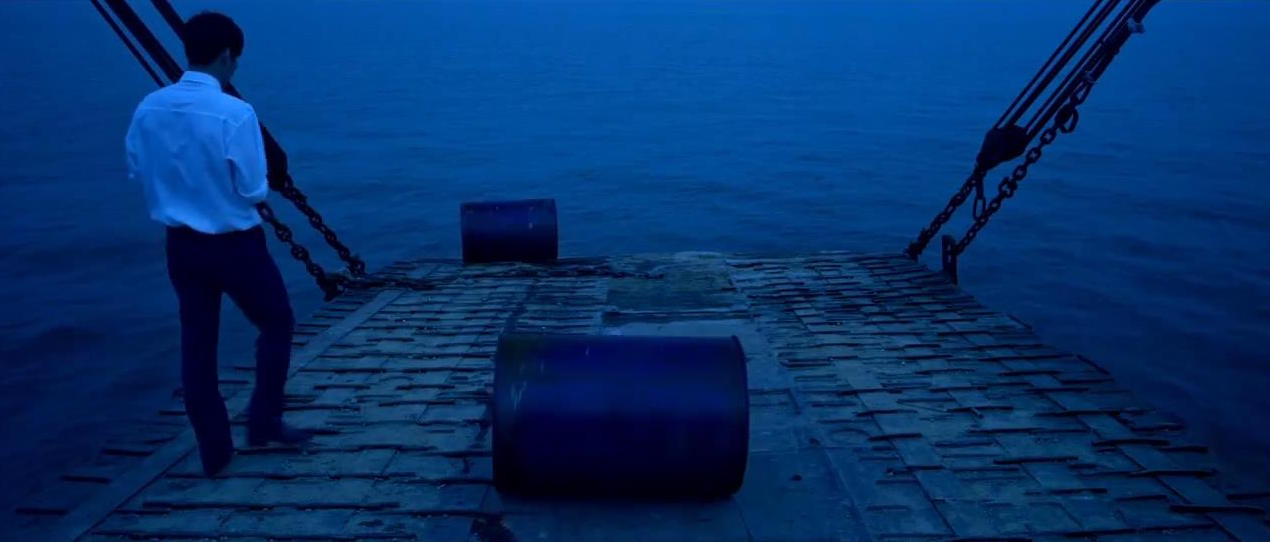
I watched New World again recently, after one of the most explosive episodes in recent Korean history: the impeachment and arrest of Park Geun-hye, the country’s first female president, after months of massive demonstrations. That sinking concrete form called to mind the tragic deaths of nearly 300 high school students aboard the overloaded Sewol ferry, which capsized in April 2014, one year into Park’s presidency. Her administration’s breathtakingly incompetent response ignited a firestorm of public anger and recrimination. Journalists revealed the cronyism and pervasive corruption that had led to the deregulation of cargo and passenger freight and the flouting of safety regulations. For weeks, the government was effectively paralyzed, deflecting responsibility for the failed rescue onto the news media that had misreported the incident, as well as the undertrained, precariously employed ferry captain and crew. In the aftermath, the Park government managed information through stonewalling, surveillance, and intimidation, trying to wrest control of the narrative back from its critics and, especially, the bereft parents of the disaster victims. Disregarding the pleas of family members of victims whose bodies were never recovered, the Park government refused to salvage the sunken ferry, going so far as to smear the grief-stricken parents as anti-government ideologues and North Korea sympathizers. (The extent of the regime’s venality was revealed when the Sewol ferry was finally lifted from the sea on March 23, 2017, less than two weeks after Park was officially removed from office.)
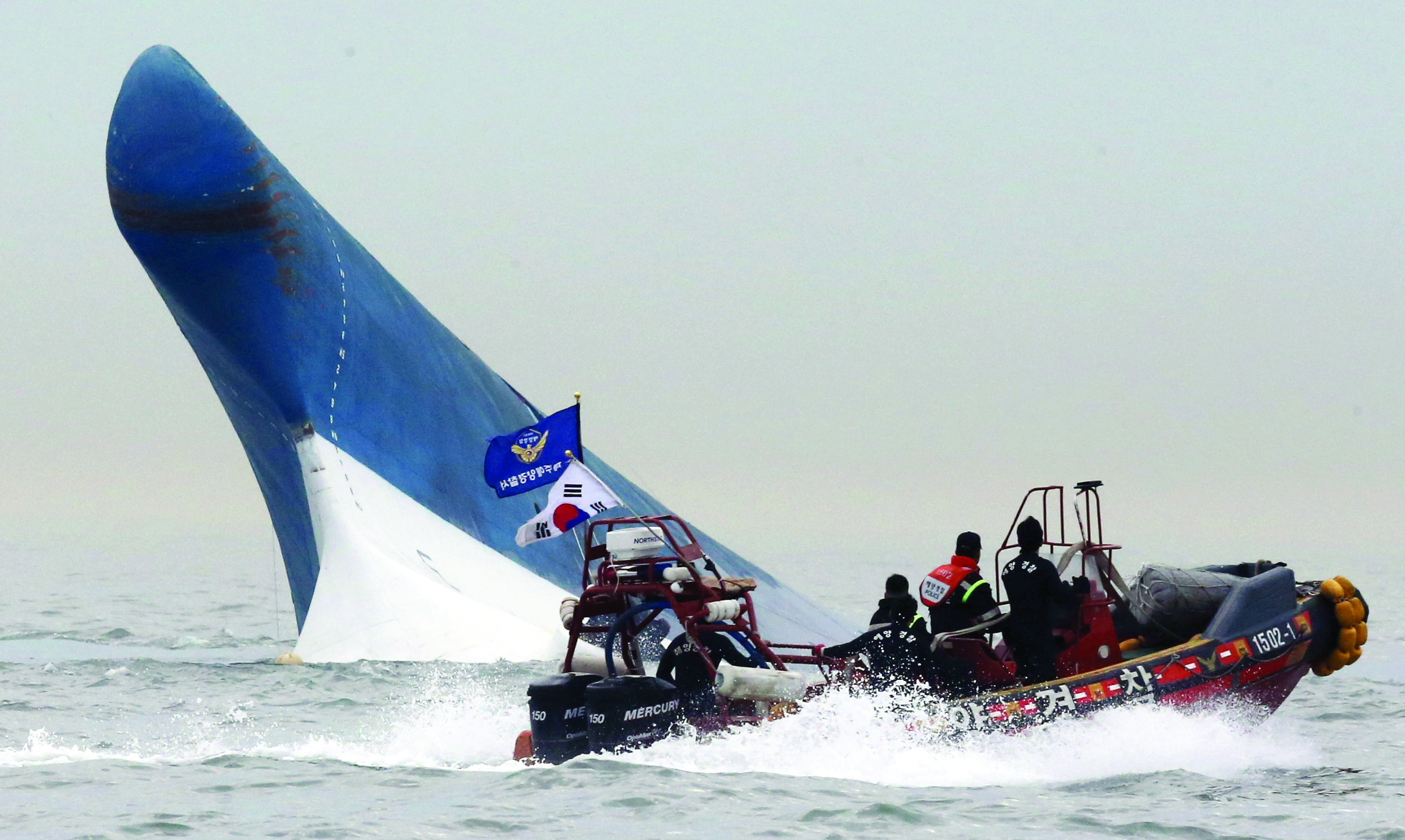
Given the cascading conditions of political breakdown that led to the Sewol disaster, the cruelty of New World, like other recent Korean gangster films, seems relatively contained. The film’s anti-hero, Ja-sung, is a police mole planted in the Goldmoon crime syndicate. Following the murder of the Goldmoon boss, internecine warfare cripples the organization and offers an unprecedented opportunity for Ja-sung’s police handlers to target the gang — but the breakdown in the mafia’s structure also narrows his escape hatch from its violent world. The detectives who protect his identity also act as his confidants (and, later, his enemies) as he seeks relief from his double consciousness with increasing desperation.

At its heart, New World is about a revival of the gangster code, which makes conscience a liability but which nevertheless offers an ersatz morality for dark times. The gang’s promise of brotherhood, and the protection that goes with such a metaphorical kinship, serves as the alibi for its increasingly corporate structure, visualized in the rigid formation of suited men assembled to affirm Ja-sung’s ascension to gang leader in the Goldmoon conference room. The deep suspicion that Goldmoon’s grand highrise headquarters — and, by extension, all visible corporate growth — are signs of unprosecuted crime has been axiomatic in gangster films since The Godfather. But it also has a particular allegorical quality that has lately become ubiquitous in mainstream Korean genre cinemas: the real crime family, at its core, is South Korea itself.
Since Park Geun-hye’s convincing election in 2013, the majority of big- and medium-budget productions in Korean cinema have been noir or action thrillers. Many explore endemic corruption in Korean society, and particularly collusion between the police, politicians, and organized crime. In films like New World, Inside Men, Veteran, Asura: City of Madness, Master, and The King, all domestic box office successes produced during Park’s presidency, the characters are drunk on power, although most of these films offer at least a modicum of redemptive potential for the one good guy (and it is always a guy) among the wolves. But corruption is always inevitable, as if an extension of the fallibility of man — South Korea, after all, is the success story of evangelical Protestant Christianity in east Asia.
And in all of them, South Korea’s postwar economic boom has a dark side. In New World and so many other recent hits, characters find themselves in moral peril by overvaluing surfaces and semblance — above all the surfaces of new real estate construction, such as the sprouting apartment complexes and office towers that the crooked mayor in Asura: City of Madness seeks to build on a vacated US military base. This connection between construction and crime is as standardized an element of Korean noir as one gets. The primary drama, throughout, is not whether or not crime will be punished or characters will reform themselves. It is, rather, how individuals suffer in a double bind, where unveiling the true coordinates of power leads to catastrophic instability. Social order relies on dissimulation.
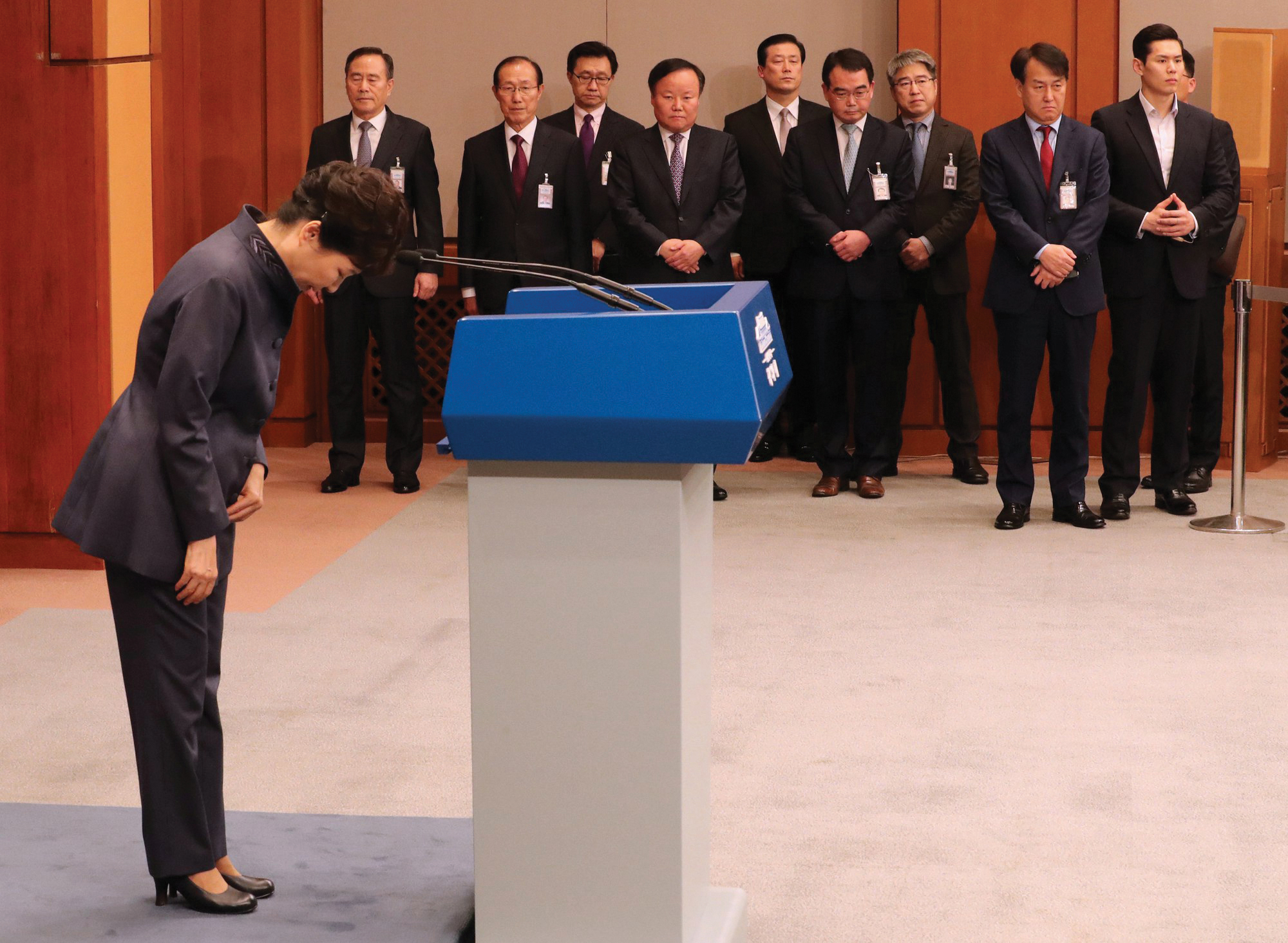
II.
Miraculous for its seemingly spontaneous eruption, the Seoul skyline boasts highrises and bright lights that rival any global megalopolis. The development of the South Korean economy — and, by extension, the city of Seoul — has been called “the Miracle on the Han,” referring to the river that bisects the capital, flowing across the peninsula from the Yellow Sea to the East Sea. Urbanization and modernization are synonymous here, and the megacity has come to represent high-growth “risk culture,” where danger lurks in faulty infrastructure resulting from the incredible speed of construction. To try to demonstrate the will of the national body politic, construction sites become feats of conjury, to give buildings and developments the guise of organic life.
Hyperdevelopment has taken place almost everywhere in East Asia, and has been a common theme throughout Asian cinema — not least in China, where directors present new megacities as suffocating death zones with unbreathable air. But in South Korea, the specific mutations produced by urban development have fed two distinct yet interdependent systems of governance. One is the militarized state, which channeled postwar foreign aid money to private enterprises that grew into the huge conglomerates (Samsung, Hyundai, LG, and many more) known here as chaebol. The other, of course, is the underground economy, managed by organized crime. It’s widely known that in the course of Seoul’s urban development, the city government often used hired muscle from gangs to forcibly remove residents and compel them to surrender their land — which you might just get away with in a developing state, but which is rather a problem for a developed one. The spectacular show of public unity against Park Geun-hye in last year’s popular street protests are signs of the widespread attachment to the boundaries between what is aboveground and what is underground, and to the proprieties that guard their separation.
What finally led to President Park’s ouster was not primarily the mismanagement of the Sewol ferry incident, but instead indignation over the influence of the president’s confidante: Choi Soon-sil, a woman with no formal government position or experience, who seemed to be rewriting the president’s speeches and determining her agenda. Choi also ran several shell companies, which she used to extort money from Samsung and other chaebol. The revelation that the empress not only had no clothes, but had been taking orders from a greedy, middle-aged housewife with such prosaic ambitions as finagling her mediocre offspring into an elite university, scandalized the Korean public. It solidified concerns that the nation, despite its glittery capital city and its surfeit of smartphones, has not yet modernized — and that South Korea was a counterfeit democracy.
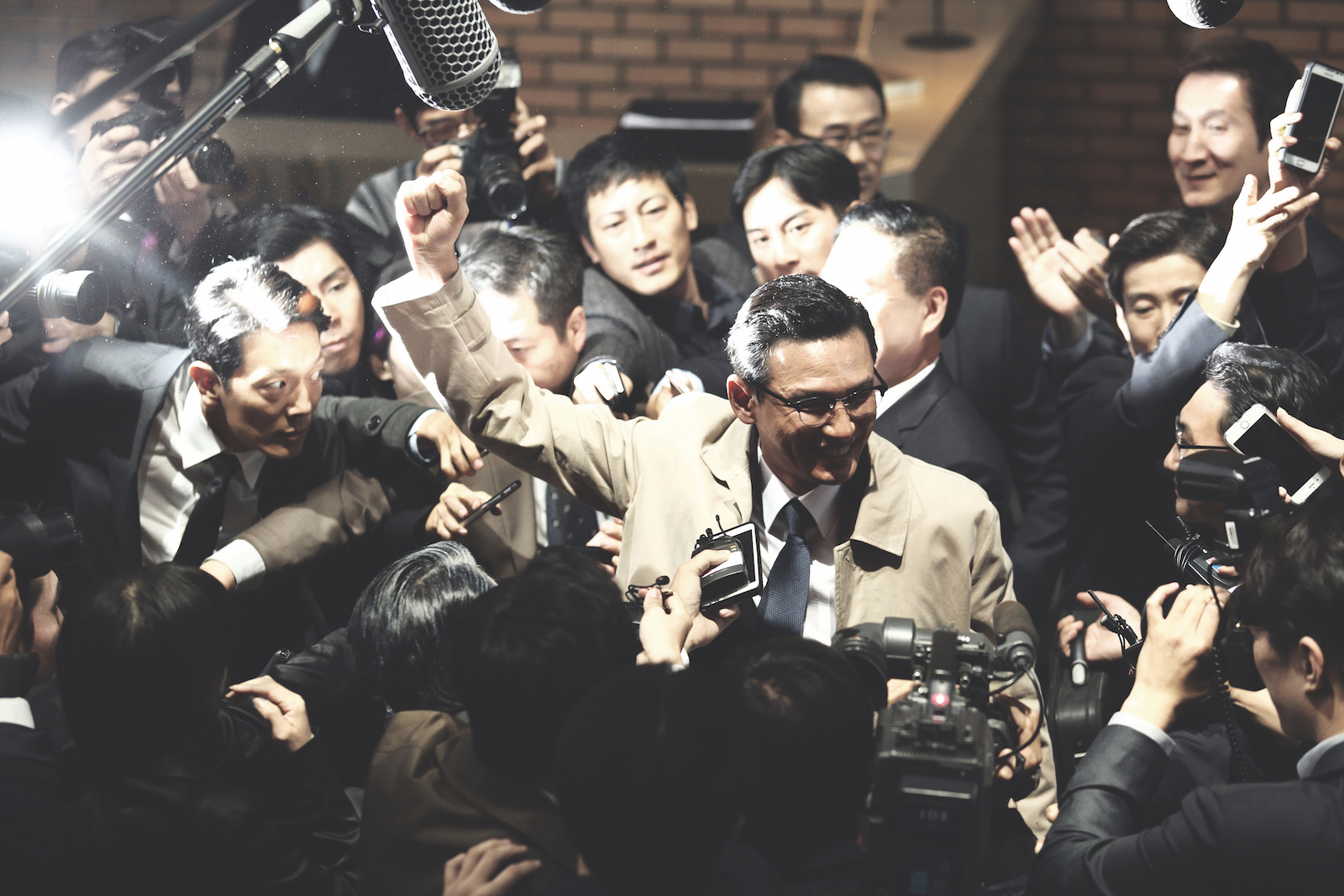
Kim Sung-soo’s noir fable Asura: City of Madness, released last fall, dramatizes these fears with operatic brutality. The film emphasizes property development as the locus of wealth and political power through both the plot and framing, continually reinforcing the contrasts between legitimate and underground spaces, and who gets to move across the divide. Its protagonist is Han Do-kyung, a corrupt police detective whose primary source of income is the dirty work he does for the mayor of the fictional Annam City. Although it is a fictional place, the characters compare Annam to real neighborhoods and satellite cities of Seoul, which have been engines of wealth accumulation and class disparity since the late 1970s. The best known site of real estate speculation is Seoul’s Gangnam neighborhood, south of the Han River, made famous as a playground of the nouveaux riches in Psy’s 2012 viral pop hit “Gangnam Style.”
In Asura, politicians, city prosecutors, and policemen are more violent than the avowed gangsters — who are actually far less calculating. Han is a product and a victim of this state violence, and the film creates sympathy for him through meticulous attention to Han’s underground environment in its mise-en-scène. As the corrupt mayor’s henchman, Han mainly circulates in the dingy warehouses and basements of Annam, first on the mayor’s business, and later as the informant for corrupt prosecutors hellbent on bringing the mayor down. Not that the prosecutors have any actual interest in justice, of course; their bosses, who are on the other side of a political game with the mayor, are demanding his ouster by any means necessary.
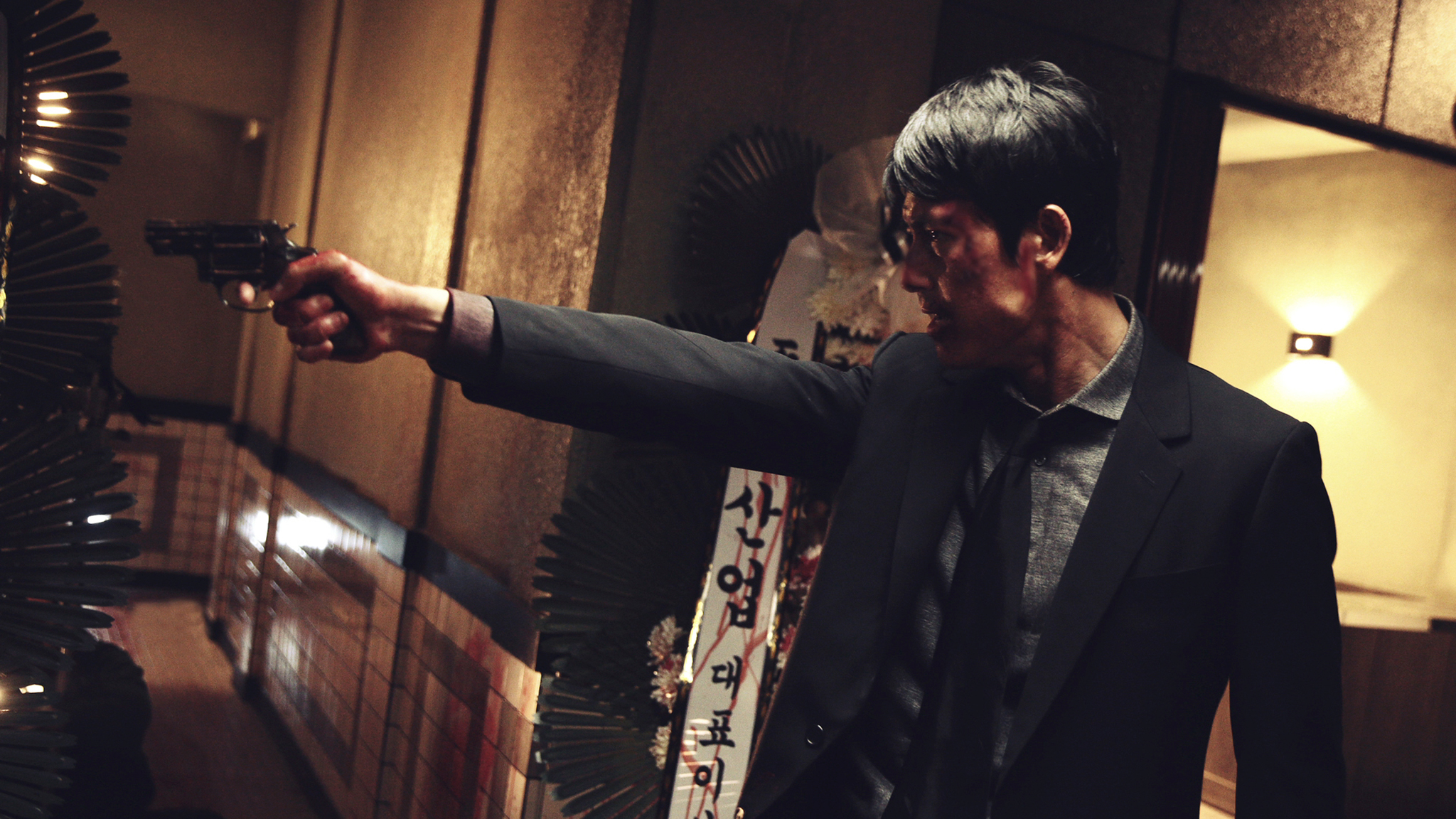
Jung Woo-sung, an actor renowned for his physicality, plays the role of the increasingly ensnared Han, who maintains his position as audience proxy almost exclusively through the way Kim’s camera frames him. Jung appears within the mise-en-scène as a caged rat: at various points he is literally boxed in by bars and fences, cornered by the corrupt prosecutors, or choked by the mayor. In its closing moments, the film hints that Han finally manages to escape his confinement, but only by tilting the camera to disrupt the spatial coordinates and shallow depth of field that it has used to suggest all-pervasive corruption.
III.
Asura’s sin city is thoroughly compromised, requiring that Han purge all his fellow residents of Annam’s underground and send them to the underworld. The film’s title refers to Buddhist demigods enthralled by violence and conflict, and that demonic theme runs through its closing credits, which scroll to Robert Plant’s rendition of the Depression-era spiritual “Satan Your Kingdom Must Come Down.” Like Asura, Na Hong-jin’s The Wailing (2016) also assiduously rejects redemptive or humanist solutions to the social problems it outlines, and also resorts to spiritual allegory to frame its social critique. Na’s film heightens the fearful exhilaration of a parable of social breakdown, and displays a similar commitment to genre form and spatial analysis, but presents the mirror image of urbanization. Here we are no longer in the massive capital, but in the beautiful and terrifying village of Gokseong, in rural South Jeolla province. Following the treads of established horror conventions, The Wailing casts doubt on the claim that modernity follows a linear trajectory towards rationalization. Instead, the decrepitude of rural villages appears here as the flipside of modern development, emerging from the same corruptions, and thus challenging the completeness of modern disenchantment.
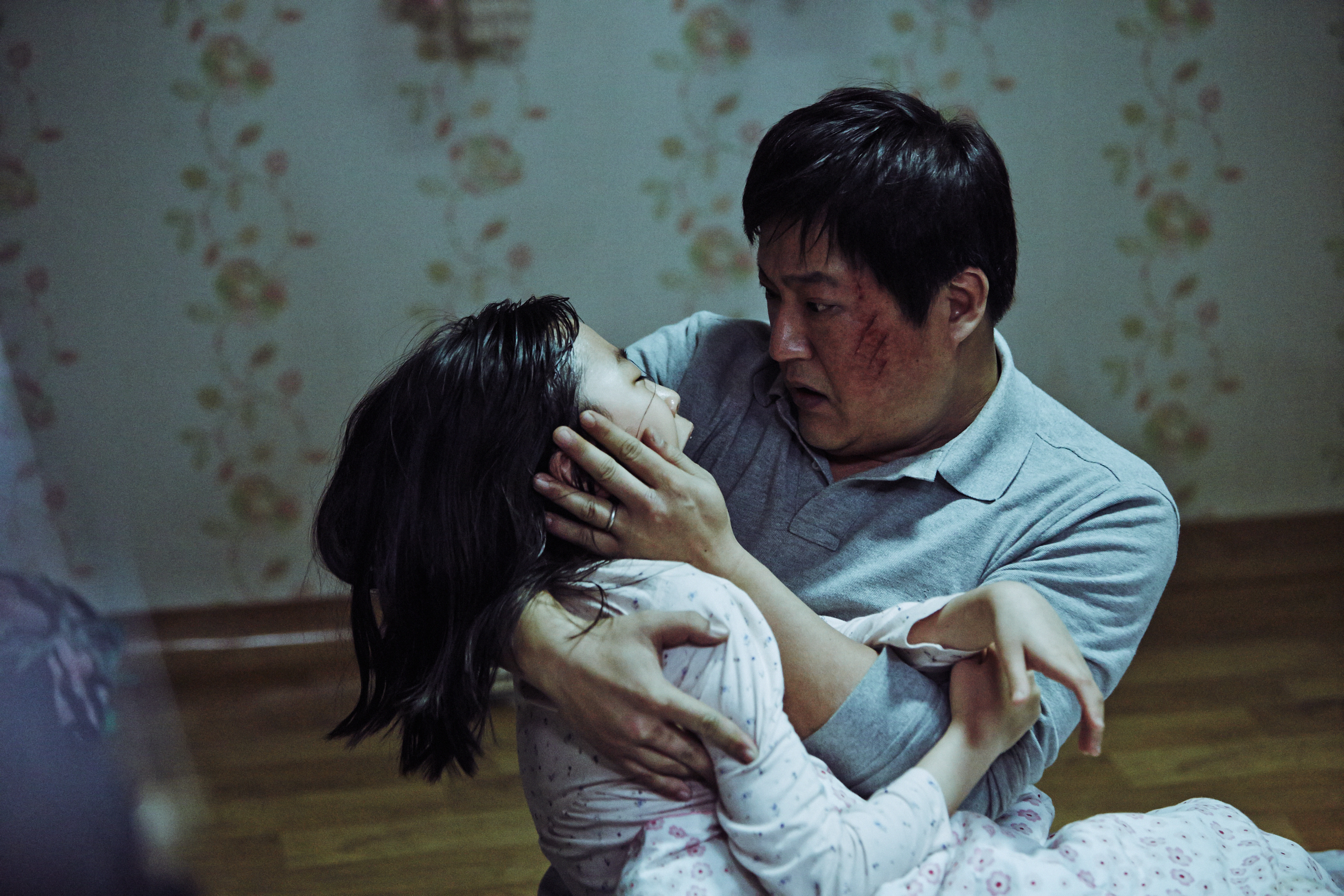
In The Wailing, a mysterious illness triggers murderous bouts of psychosis in the villagers, and rumors spread that a malevolent stranger is the cause of the affliction. The film’s country bumpkin policeman, Jong-goo, starts investigating the matter innocently enough. But soon he begins a witchhunt, instigating mob violence, even as he refuses to acknowledge how little he understands of the plague. When he finally realizes he is in over his head, he doesn’t know well enough to accept divine intervention. Whereas Asura presents political power and wealth as so corrupting as to transform men into demons, The Wailing indicts man’s hubris, for placing himself at the center of a conflict beyond his scope.
The Wailing presents Korean society as a horror show, where citizens have been duped by both extraordinary malevolence and dull complacency. Its characters, like Han in Asura, are trapped by circumstances and also make poor choices. The spectacular dissolution of rural community results from supernatural forces outside of human control and comprehension, yet its characters aren’t quite off the hook for their susceptibility to evil. Although victim/perpetrator labels are inadequate to explain the logic of these films, they don’t completely jettison the notion of choice and responsibility to the collective either. The only antidote to corruptibility, it seems, is self-destruction: an act of self-preservation as much as surrender. This is a world of impossible choices, making it an apt allegory for not just South Korea but the contemporary geopolitical situation at large.
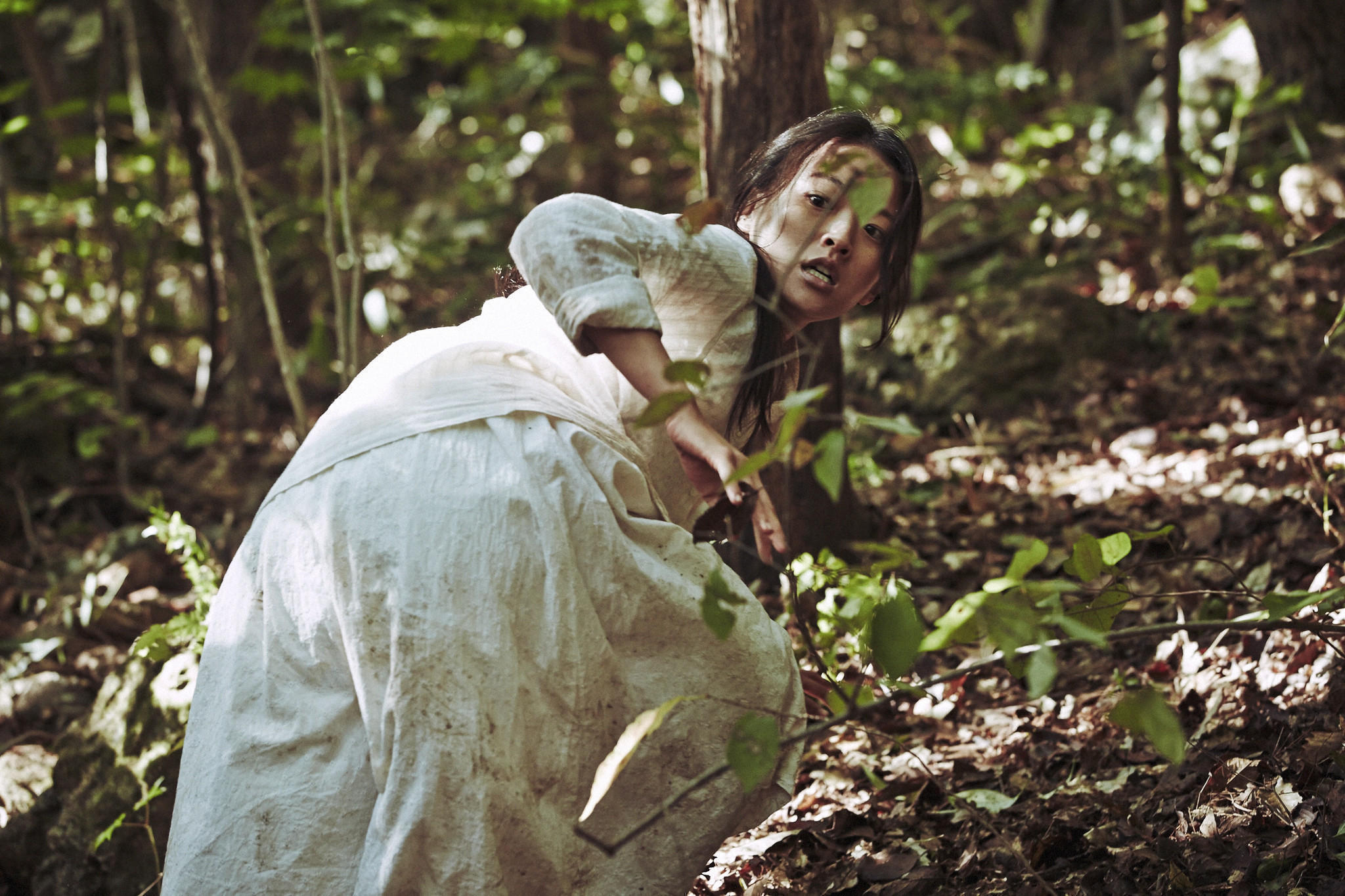
The Wailing also helps us to understand the fear and fascination around the recent presidential scandal, especially the fact that the perceived irrationality of the president’s loyalty to her old friend Choi Soon-sil was as disturbing to the Korean public as the actual bribes. Choi claimed to be in spiritual contact with Park’s dead mother, and for many voters, Choi’s rumored posturing as a shaman — her father was a Christian cult leader — was more damning than the fact that she extorted tens of millions of dollars from South Korean conglomerates. Spending money to grease the bureaucracy’s wheels is nothing new, after all; every president in the last 25 years has dealt with accusations of corruption. Park, though, is the first president to be successfully impeached in South Korean history, and the ire her fall evokes cannot be understood outside of the nation’s anxieties over incomplete modernization, coupled with the desire to sustain the miraculous trajectory of Korea’s postwar development.
IV.
In 2005, the New York Times film critic Manohla Dargis wrote a scathing review of Park Chan-wook’s Oldboy, the film that truly launched Korean cinema’s bid for recognition among global cinephiles through genre experimentation and extreme violence. Dargis claimed that “Mr. Park’s largest fan base may be those cult-film aficionados for whom distinctions between high art and low art are unknown, unrecognized and certainly unwelcome.”
In fact, the vogue for development noir and underdevelopment horror suggests that distinctions between high and low are paramount to audiences of contemporary Korean genre cinemas. But the distinction between high and low functions, perhaps, in a different sense: as measures of the spatial coordinates that lend these films their affective force. Films like New World, Asura, and The Wailing — films that dramatize the space between, and the interdependence of, aboveground and underground — suggest that extreme violence functions for art filmmaking as a model that seeks to be avant-garde while also being mainstream. And they express an allegorical drive that’s as torn between opportunism and moralism as their conflicted characters.
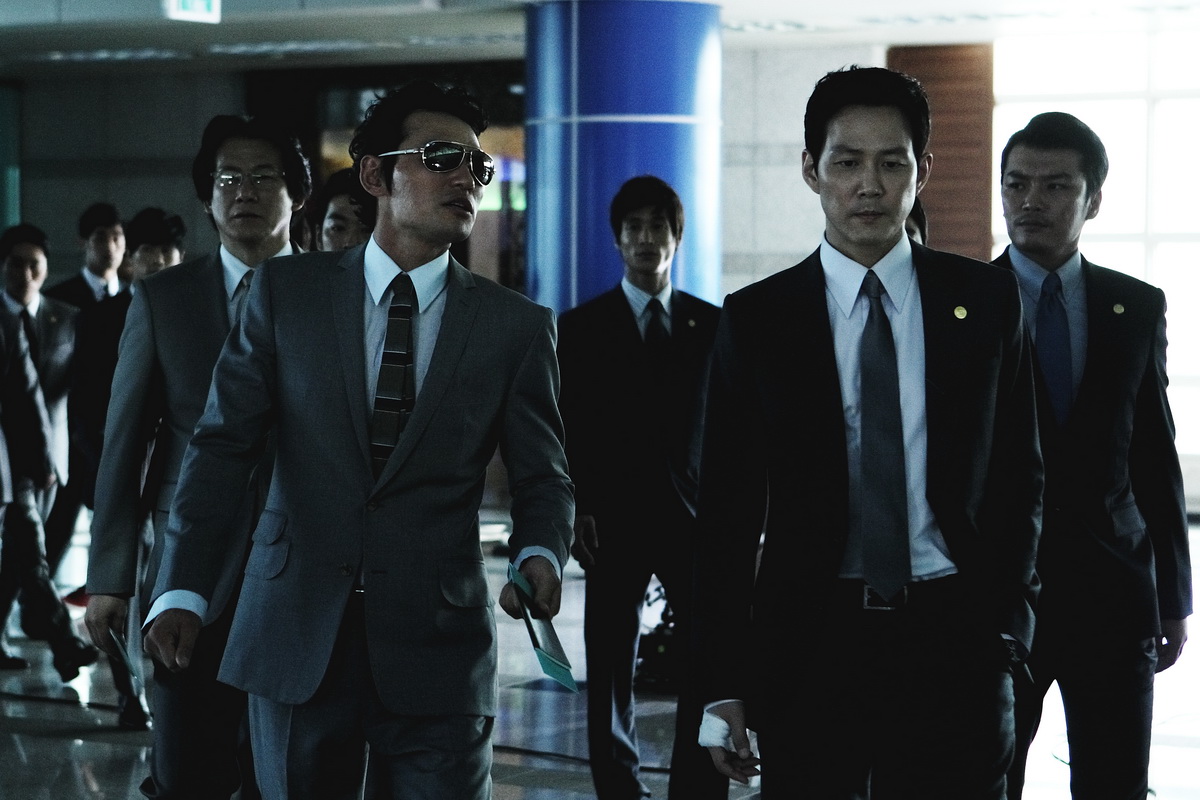
For embedded in gangster noir and rural horror are deep, deep fears: fears about rapid development, corruption, and lingering historical traumas. Lately, the Korean internet has adopted a shorthand viral phrase for this brooding anxiety that South Korea is merely passing as a democratic society: “Hell Joseon,” in reference to the Joseon dynasty that governed the peninsula from 1392 until the Japanese annexation of 1905. Ruled by a strict caste system that made class mobility a crime, Joseon society was controlled by an aristocratic elite that also populated the ranks of the government bureaucracy. “Hell Joseon,” as the young now call contemporary South Korea, reflects the incompatibility of two equally cherished visions of social organization: a society based on clan loyalties and in-group rules on the one hand, and on the other, one that affirms the democratic entitlements of a “modern,” post-dictatorship society, whose populist strains became once again visible during last fall and winter’s protests against Park. Promising to revolutionize society, Park’s impeachment signals a shinsegae, or “new world.” Yet the films of the Park administration, set to the keynote rung by New World, suggest that the fears of the past are not so easily outrun.